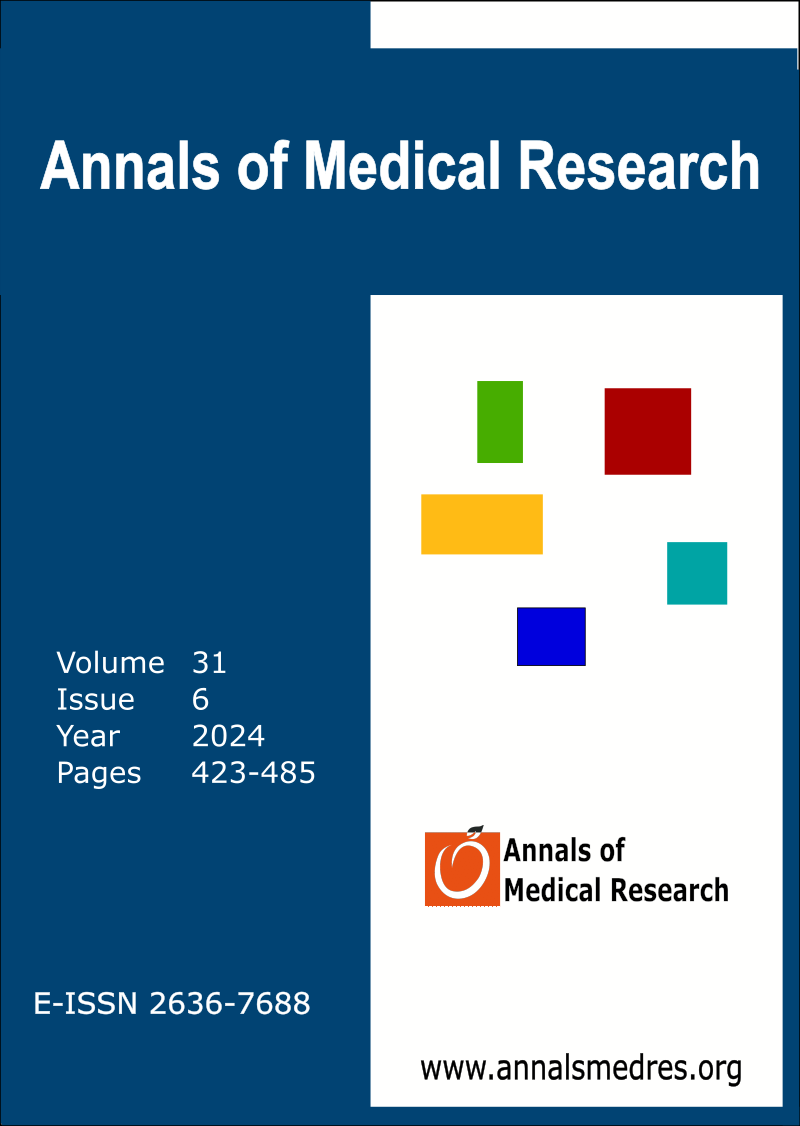The effects of subchorionic hematomas on the future of pregnancies with threatened miscarriage
Keywords:
Subchorionic hematoma, Threatened miscarriage, Perinatal outcomes, Preterm delivery, Pregnancy complicationsAbstract
Aim: The clinical significance of first trimester subchorionic hematoma, which is worrisome to pregnant women in terms of the outcome of the pregnancy, still remains unclear. The objective of this study is to examine the association between subchorionic hematomas in patients with threatened miscarriage and adverse pregnancy outcomes.
Materials and Methods: The retrospective cohort study was conducted in a tertiary center from September 2022 to January 2024. 200 patients who were hospitalized with threatened miscarriage during the sixth to fourteenth week of a singleton pregnancy were included. The individuals that satisfy the established criteria for the study were categorized into two groups with threatened miscarriage based on the ultrasound examination: the study group, which included patients with subchorionic hematoma and the control group, which included patients without subchorionic hematoma. Demographic information, maternal and neonatal outcomes were compared for both groups.
Results: Maternal age, BMI, parity, gestational age at diagnosis, history of abortus were similar for both groups (p > 0.05). Miscarriage rates were higher in the group with SCH than without SCH (28% vs. 25%, p= 0.631), but no statistical significance was observed. The frequencies of intrauterine death, gestational age at delivery, preterm delivery, mode of delivery, hypertensive disorders of pregnancy, placenta previa-placenta accreta spectrum, gestational diabetes mellitus, intrauterine growth restriction were not statistically significant (p > 0.05) between groups. The hematoma sizes did not show any statistically significant difference between those whose pregnancies led to miscarriage and those whose pregnancies did not (29.6±14.30 mm vs. 27.1±14.58 mm, respectively; p = 0.367). The subchorionic hematoma diameters did not show any correlation with the gestational age at delivery, birth weight, APGAR scores at 1st and 5th minute.
Conclusion: Our study suggests that detection of threatened miscarriage with subchorionic hematoma did not result in an elevation in miscarriage rates, maternal and neonatal complications.
Downloads
Published
Issue
Section
License
Copyright (c) 2024 Annals of Medical Research

This work is licensed under a Creative Commons Attribution-NonCommercial-NoDerivatives 4.0 International License.
CC Attribution-NonCommercial-NoDerivatives 4.0






